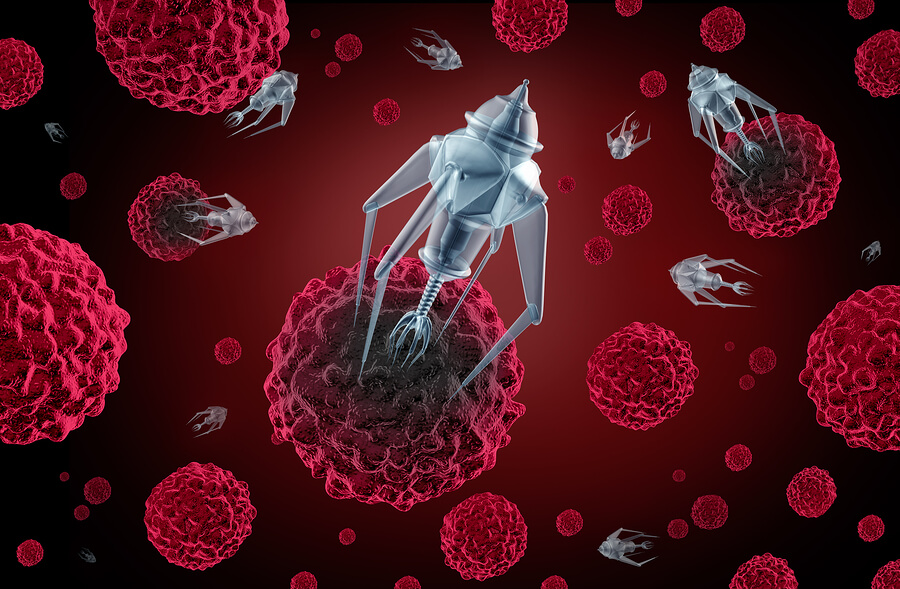This is no novel idea, but after 17 years of a spirited debated, pharmaceutical companies are finally taking note. It was Dr. Mary Hendrix and her team out of the University of Iowa Cancer center in Iowa City who first reported in 1999 that human melanoma tumor cells were capable of forming perfusable vessel-like networks through a process called vasculogenic mimicry (VM). This process is in contrast to the long-held belief that the perfusion of tumors is exclusively accomplished by angiogenesis. For the past decade, the debate has laid dormant as the angiogenesis theory remained the focal point, and pharmaceuticals were created to inhibit that process as a treatment against tumors. However, as the traditional angiogenesis-inhibiting therapies continue to provide limited success, VM is finally gaining the attention it deserves.
In this article published by Hendrix and her collaborators earlier this year, they provide an overview of all the pertinent studies supporting VM in the past several years – and the list is extensive. The vascular networks have now been identified in several other tumor varieties including bone, breast, ovary, skin, lung, prostate, bladder and kidney. VM may very well be the overlooked key to answer the question of why focusing on inhibiting angiogenesis has failed to meet expectations.
The complexity and capacity of this process is almost hard to believe, but in contrast to angiogenesis where the tumor cells release growth factors to stimulate blood vessels to grow into the tumor mass, VM consists of an orchestrated process involving cancer cells expressing genes linked to early embryonic cells, endothelial cells, blood vessel formation, coagulation inhibition, and even matrix remodeling … all within the depths of the tumor itself. This process involves a scrunching up of the matrix between tumor cells, resulting in a network of tunnels that, while not actually being blood vessels themselves, express the necessary phenotype to mimic the function of vessels. Main external blood vessels simply supply the flow to the tumor mass, and these imitation tunnels take care of the internal part. Researchers in a 2008 study showed evidence that these tunnels do in fact carry blood as the team injected fluorescent dye into the blood streams of patients with melanoma tumors in their eyes. In less than 30 seconds, the fluorescent dye appeared in the tunnels of their tumors.
Diving even farther down the rabbit hole, VM is also believed to pave the way to metastasis, the spreading of cancer to other parts of the body. In a study focused on breast cancer metastasis conducted by molecular biologist Greg Hannon from the University of Cambridge and his colleagues, results showed that the cancer cells most likely to grow into metastases had overexpression of two genes involved in the inhibition of blood clotting. These cells also displayed vasculogenic mimicry, which is also heavily influenced by blood-clot-inhibiting genes. In fact, when the researchers then inhibited those two genes, the number of VM tunnels in the tumor decreased. This link to metastasis means that focusing on blocking VM as a form of treatment could be revolutionary.
Research has since begun to determine if standard angiogenesis inhibitors could also block vasculogenic mimicry, but they actually appeared to do the opposite. By preventing the growth of blood vessels into the tumors and thereby starving them of oxygen, the tumors became hypoxic, which has been reported to be a stimulus of VM. The angiogenesis inhibitors actually triggered the cancer cells to create their own blood-delivering tunnels.
Several companies are now in the process of testing potential drug candidates that target proteins involved in the formation of the vessel-like networks within cancerous tumors, with one company, called TaiRx, already working through clinical trials with its drug CVM-1118, a derivative of a plant compound. The senior vice present of TaiRx is one of Hendrix’s former Ph.D. students, and initially sent the drug to her former Ph.D. supervisor to test whether it was effective in arresting vasulogenic mimicry. It was. Hendrix has since moved her lab to West Virginia University where she is continuing to determine the effectiveness of several other drug candidates that pharmaceutical companies are sending her.
With results of a 2016 metaanalysis, conducted by researchers in China, indicating that the chances of patients dying from cancerous tumors nearly double when the tumors show evidence of vasculogenic mimicry, these new pharmaceuticals may finally address the piece that angiogenesis-inhibitors have been missing.
By Brady Slater, BSc
Abstract: Tumor cell vascular mimicry: Novel targeting opportunity in melanoma.
Original article: Tumors have found a bloody new way to grow and spread











